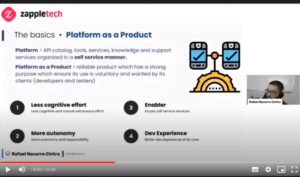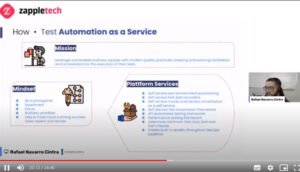Rafael Navarro Cintra is a solution architect focusing on quality control & DevOps and a former Scrum master with vast experience in software development for banks and other large financial institutions. He talks about why automated testing is so important and why it should be done first.
Table of Contents
Simplifying automated testing: the psychological aspect
How to make automated testing easier? Let’s talk about the psychological aspect of this task — three cognitive loads. We need to:- Simplify the internal cognitive load: the test team should not waste time learning how automated testing works. These tests should be simple, like “I press the button, and it all works.”
- Reduce external cognitive load: your test and QA team should understand that it may be difficult to learn how the test automation framework works, but it will later help them focus on the main thing, i.e., delivering a quality product to users.
- Maximize Relevant Cognitive Load: You give your team a framework and all the tools that must be easy to use. It allows your workers to focus their efforts on generating innovative ideas and increasing their work efficiency.
Platform as a Product
 A platform includes self-service API catalogs, tools, services, knowledge bases, and support services. It’s a solid product that testers and QAs really want to use. The main idea is not to force testers to automate processes but to convince them to do it voluntarily.
A platform includes self-service API catalogs, tools, services, knowledge bases, and support services. It’s a solid product that testers and QAs really want to use. The main idea is not to force testers to automate processes but to convince them to do it voluntarily.Goals of Simplifying Test Automation
Simplifying automation allows for significant improvements in flexibility, performance, and quality. Profit for teams:- Decreased time spent on tasks that help achieve main goals.
- Reduced downtime.
- The possibility to anticipate and prevent future problems.
- Reduced time to complete tasks.
- Faster product release and troubleshooting.
Automated Testing as a Service
 Let’s say you already have a framework, but you want to know where to go next. Here are 3 main steps: Where to start
Let’s say you already have a framework, but you want to know where to go next. Here are 3 main steps: Where to start- assemble the team and roles of its members;
- request and validate permissions;
- adapt;
- compare mission and goals;
- define the criteria of success and the ultimate goal.
- find your customers and their pain points;
- refine your initial backlog;
- use a short experimental cycle;
- compare, refine, experiment (continuous MVPs).
- define a baseline, what to measure and how;
- determine your goals;
- use incremental and continuous cycle.




